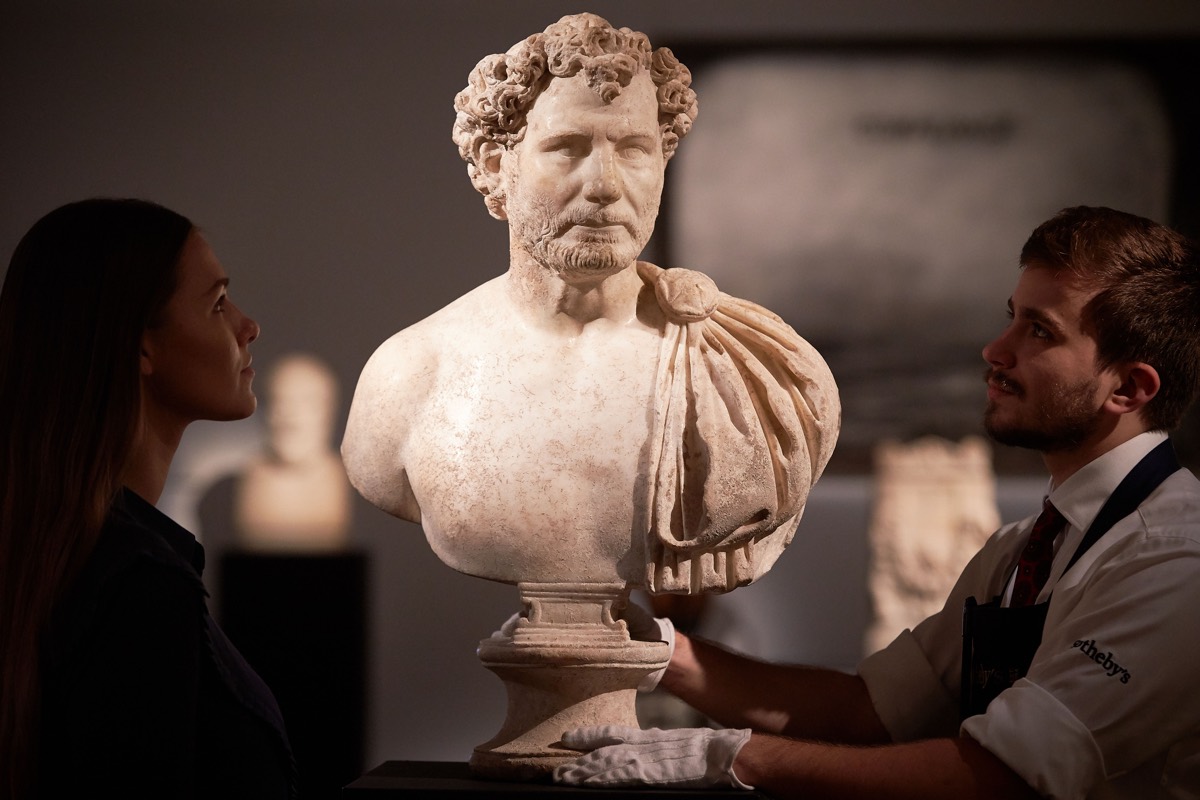1,800-Year-Old Roman Sculpture Fetches Nearly $1 Million at Auction

A striking 1,800-year-old sculpture depicting a Roman military officer has been sold at auction by the Denver Art Museum for about $930,000. The buyer is an art dealer in London who plans to resell it.
The sculpture likely depicts a senator or member of Rome's nobility who led the military during a campaign in the second century A.D., according to Susan Matheson, a curator of ancient art at the Yale University Art Gallery. Matheson is not involved with the sale.
The Denver Art Museum, a nonprofit organization that receives part of its funding through local taxes, sold the sculpture as part of a broader sell-off of art from its collections, which, later this year, will include art from Egypt. This is the latest example of an American museum putting part of its collection up for sale in an effort to fund the individual institutions; the Toledo Museum of Art (in Ohio) and the Delaware Art Museum also recently sold part of their collections. [The 25 Most Mysterious Archaeological Finds on Earth]
The money raised from the sale of the Roman sculpture, which the Denver Art Museum acquired in 1965 from an antiquities dealer in Rome, will go toward the museum's acquisition fund to purchase new art.
"Like acquisitions, deaccessions are standard practice for all art museums, and museums overall," Shadia Lemus, communication manager for the museum, told Live Science in an email. "As a result, this artwork was no longer considered to be a good fit for the collection. Funds received from this sale will exclusively go into the museum's Painting and Sculpture Department acquisitions fund."
The museum adheres to the American Alliance of Museums' and Association of Art Museum Directors' (AAMD) industry standards for choosing which artworks should be sold and the proper way to conduct the sale and use the money, Lemus said. The AAMD did not respond to a request for comment by the time this story was published. However, a policy manual from the organization says that museums can sell works of art, under certain conditions, if the funds are used to buy new works of art.
The sale of art and artifacts by museums is a controversial practice among archaeologists and historians who have argued about the practice in numerous journal articles.
Sign up for the Live Science daily newsletter now
Get the world’s most fascinating discoveries delivered straight to your inbox.
Matheson said that she is not happy with the sale of this sculpture. "I am sorry that the Denver Art Museum chose to sell it. I hope it will remain in a public collection."
In 1996, Matheson wrote a short entry on the sculpture in an exhibition catalog called "Claudia: Women in Ancient Rome" (Yale University Art Gallery).
"The portrait represents a Roman military officer, distinguished by the cape he wears over his shoulder. He was probably not a professional soldier, however, but rather a member of the elite senatorial or equestrian class whose command during a specific military campaign would provide the opportunity for political advancement or financial gain," Matheson wrote in the catalog entry, noting that the man appears to be middle-age.
"At this stage of his life, it is likely that he would be married and have children. Unless his father was still alive, he would be the head of the household, a position of near absolute power in theory, but one subject to negotiation, persuasion and compromise in practice. While he was away on military campaign his wife would assume full command of both the household and the family business," wrote Matheson, who dated the sculpture to the second century A.D.
Matheson declined to comment on whether the amount of money the Denver Art Museum got was high or low, telling Live Science that "auction results are generally taken to establish fair market value."
The sculpture was sold at auction at Sotheby's to Daniel Katz Ltd., an art dealership in London owned by Daniel Katz. The company "will be offering it for sale," Katz told Live Science.
Original article on Live Science.

Owen Jarus is a regular contributor to Live Science who writes about archaeology and humans' past. He has also written for The Independent (UK), The Canadian Press (CP) and The Associated Press (AP), among others. Owen has a bachelor of arts degree from the University of Toronto and a journalism degree from Ryerson University.










